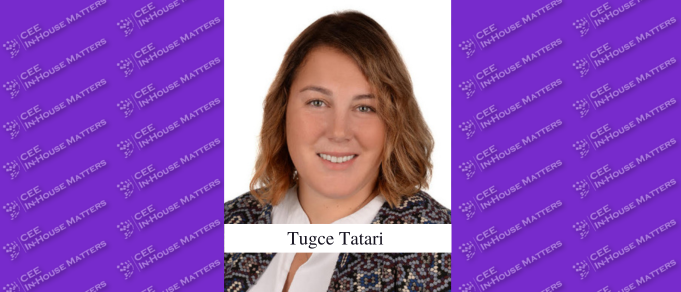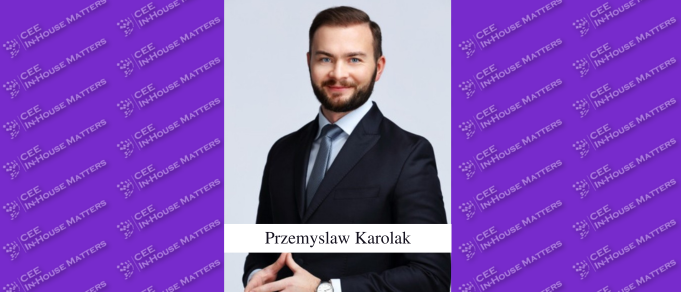Years ago, when a group of in-house lawyers entered the elevator of a bank, someone would mock, “Wow, what a bunch of handbrakes!” While this did not personally happen to me, I am well aware that internal legal counsels are often referred to as “problem factories” or “speedbumps” – the couriers of bad news, best to be avoided. I must admit, this scorn was not without reason. But, should this necessarily still be the case? In my view, not any longer.
I am a banking lawyer. During the 17 years of my career, I have worked with a number of different employers and organizations. I started with the banking supervisory authority in Budapest, spent many years with an international law firm, and then worked as a sole practitioner. Most recently, I have spent many years now in the legal departments of several banks.
The common denominator of all my workplaces has been banking law, as I have worked on more or less the same type of deals and applied the same laws and regulations. The differences were more in the structures and approaches of the organizations I worked in. Each of them had a set of specific features which had to be taken into consideration when designing an efficient and seamless legal support system. None of these specifics concerned the knowledge of law or their application. They were rather about processes, operation, efficiency, and the right approach. In my current position we are striving to create a system which is a combination of all the best practices of my previous workplaces.
What are, therefore, the secret ingredients of a successful heavyweight legal team, regarded as a true collaborating partner by the rest of the organization?
Ingredients: The main elements of success for an in-housel team are multi-functionality and variety; in my view, homogeneity is always to be avoided. Diversity is a particularly important factor when selecting team members. And I do not mean this in the classical sense only (i.e. gender, family background, etc.). In a good team, the best qualities of different types of lawyers should be blended at an optimal level.
My experience is that the ultimate guiding principle of good external counsels is client focus, coupled with a service-providing mentality. Good external counsels do not think simply in terms of paragraphs of law, but attempt to understand the deal in its entirety, including its purpose and processes involved. Then they will go to extremes to deliver results within legal limits. The forte of in-house counsels, on the other hand, is their intimate knowledge of internal operations, processes, organizational architecture, and behavior. They are often called for troubleshooting. They are the practical testers and implementers of contracts, thus they see the pitfalls and shortcomings of real life application of, for just one example, LMA-based lending documentations. They are perhaps less flexible than their external counterparts, but will also go to extremes to protect their employer’s interests.
In my current team we have a wide variety of different skills. There are colleagues who have experience as external counsels who often have worked at international law firms, others who have gained experience in various banks, and some who come from outside the financial services sector. We have worked through economic booms and deep recessions (and everything in between), supported large transactions and foreclosed securities, and seen companies rise … and become insolvent.
Headcount. Staff headcount in legal departments can shift between two extremes. Some companies keep their in-house teams to a minimum and outsource all major items to external counsels. Some, however, take the view that only employees can be truly loyal, and accordingly operate with an inflated headcount. The first solution exposes the organization unnecessarily, as in my view taking ownership for the job at hand is increasingly difficult when the lawyer is remote from the organization. On the other hand, the second extreme creates inflexibility when planning costs and budgets. When not certain if a given headcount is right for the company at a given period, just ask yourself this: If this department was your own law firm, how many lawyers could you employ and afford to pay and also, would the clients be paying for the services of the selected colleagues?
With my team, we went for a middle of the road solution with regard to headcount design. We introduced a time sheet system which, on the one hand, gives daily information regarding capacity utilization, and on the other hand provides the ability to track actual changes of capacity requirements over the long term. Our internal resources allowed us the flexibility to work with external legal services as and when required. External counsels always co-operate closely with an in-house lawyer on our team designated to handle the file, thus ensuring the most efficient and quality assured legal support.
Organizing workflow. Each and every lawyer has an area of law where he/she is particularly strong. Supporting business on a one-man-show basis is, however, dangerous. This can only work well as long as the capacity of the given person is used in a balanced manner or when he or she is not absent from work. The strength of a legal department can be found in team dynamics, flexibility, and seamless substitution of experts.
We, therefore, implemented a core team support structure, whereby a business area is supported by two to three colleagues and each lawyer has several areas to support. This gives the business a balanced and even flow of service, while my colleagues enjoy a variety of different practice areas and peace of mind during their holidays.
Maintaining motivation. In the very likely event that the above “secret ingredients” allow you to put together a reliable and strong team, it is important that, going forward, the organization demonstrates a good level of commitment towards it, including in the provision of opportunities to improve professionally in the form of internal and external trainings and courses. In addition, frequent personal feedback and acknowledgements of performance have to be consistently applied both in formal and informal ways. Finally, based on personal trust, a better work-life balance needs to be promoted in the form of more flexible working schedules.
In our team, colleagues work in a flexible working schedule; i.e., there is no strict “nine to five presence” policy. They have remote access to their workstations. They can organize their schedules of internal and external meetings and other activities. Sitting in the office is not an essential measure of discipline and performance. Having said this, timesheets, capacity, workflow/deadline management monitoring, and internal client feedback are increasingly and frequently used in order to ascertain that this system achieves its objectives.
As a final note, the evolution will always be a work-in-progress. The most important is to have a strategic vision, aligned with the wider corporate interests, which has to be pursued relentlessly while accepting that most probably it will always be a moving target in an ever changing environment.
This Article was originally published in Issue 4.4 of the CEE Legal Matters Magazine. If you would like to receive a hard copy of the magazine, you can subscribe here.


















